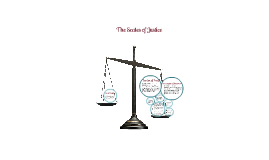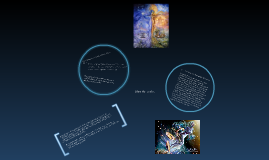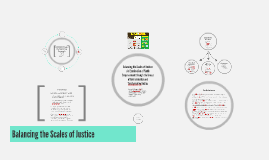Balancing the Scales of Justice
Transcript: School discipline 50% of Black students report being suspended or expelled compared to 20% of White students (Gregory, Skiba, & Noguera, 2010) Youth violence Homicide is the leading cause of death for youth ages 15-24 (CDC, 2012) Health Thirty-nine percent of Black and Latino youth are overweight or obese (Ogden et al., 2012) Greenspace Parks & Community gardens (Loukaitou-Sideris & Stieglitz, 2002; Wolch, Wilson, & Fehrenbach, 2005) Ecological Systems Theory Development occurs in the context of interactive systems (Bronfenbrenner, 1977) Restorative Justice A process by which all people affected by and injustice have a stake (Braithwaite, 2004) Transformative Justice Transform social and personal structures in the context of injustice (Wozniak, 2008) Environmental Justice Inequitable distribution of environmental burdens (Bullard, 1990) Positive Youth Development Restorative practices Community building Environmental research Community engagement Environmental Science Class Methods Participants 11 ethnoculturally diverse youth 15-19 years of age 7 ethnoculturally diverse undergraduate research assistants Community-based Participatory Research Participant observation Surveys Web-based learning environment - MOODLE Focus groups Planning Reflection “Go out and make our parks better.... eventually someone is going to see and then is going to reflect on it and eventually lead to others [making a change].” (Tanacia) “Like if you make a change, people will want to make a change also..” (Josey) “If somebody sees you could make a change where they don’t think it’s possible though, they’ll be willing to try to change as well.” (Kate) “Since like, they are already in college you know, and they come to the school to help us out. So like, they’re teaching us what they know, so later on in life when we get there we’ll know the stuff that we already know.” (Mark) “... we have a voice in changing the community, like with the parks and all that. I found that interesting, because I didn’t know that. ” (Orin) “Confidence in the way of being more open, and being able to go out and get surveys done. Like being confident to be able to speak to people.” (Julio) "I thought it was kind of a shock with the surveys, and I never thought I would do something like that. The outcome was pretty good because, like what Julio said, it helped build confidence in talking to people. (Cruz) "[Working with LMU students] ...inspired me to do good in school. The way you guys are.... getting an education, making life kind of simple. It kind of showed me that I can do that too. Instead of being lazy and not doing anything. So since I’ve been in this class I’ve been doing good." (Jose) "Before I was in this class, my grades were just downhill. But, just having to do what we did in here, I was just like, oh I should do that in all my classes. It helped me to get my grades up and keep doing it." (Andre) Community-based Participatory Research An empowering mode of engagement and knowledge production A method for leveraging restorative and environmental justice tenets toward transformative justice Youth engagement in environmental research can foster self- and collective-efficacy and a sense of responsibility to community and the broader environment Restorative and transformative justice situated within environmental research is a powerful mode of positive youth development toward redressing youth violence and broader poor youth outcomes Baker, E. A., Schootman, M., Barnidge, E., & Cheryl Kelly. (2006). Peer reviewed: The role of race and poverty in access to foods that enable individuals to adhere to dietary guidelines. Preventing chronic disease, 3(3). Retrieved from http://www.ncbi.nlm.nih.gov/pmc/articles/PMC1636719/ Block, J. P., Scribner, R. A., & DeSalvo, K. B. (2004). Fast food, race/ethnicity, and income: a geographic analysis. American journal of preventive medicine, 27(3), 211–217. Dewey, J., & Bentley, A. F. (1949). Knowing and the known. Beacon Press. GordonLarsen, P., Nelson, M. C., Page, P., & Popkin, B. M. (2006). Inequality in the built environment underlies key health disparities in physical activity and obesity. Pediatrics, 117(2), 417–424. Grills, C., Villanueva, S., Subica, A. M., & Douglas, J. A. (2014). Communities Creating Healthy Environments: Improving access to healthy foods and safe places to play in communities of color. Preventive medicine, 69, Kellert, S. R. (2002). Experiencing Nature: Affective, Gognitive, and Evaluative Development in Children. In P. H. Kahn & S. R. Kellert (Eds.), Children and Nature: Psychological, Sociocultural, and Evolutionary Investigations (pp. 117–152). Cambridge, Mass: The MIT Press. Lave, J., & Wenger, E. (1991). Situated Learning: Legitimate Peripheral Participation (1st edition.). Cambridge England ; New York: Cambridge University Press. LoukaitouSideris, A., & Stieglitz, O. (2002). Children in Los Angeles Parks: A Study of Equity, Quality and Children’s Satisfaction with Neighbourhood

















